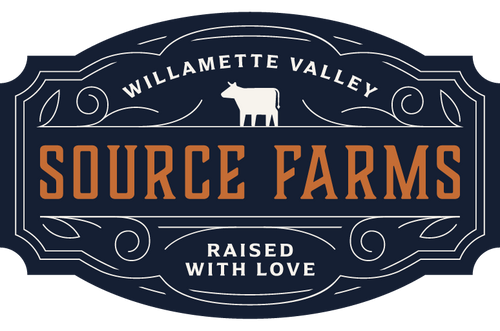11 regenerative farming practices to pay attention to—and how they benefit both people and planet.
Regenerative agriculture is more of an approach to farming than a prescribed set of practices, meaning a regenerative farm can look like many different things. A farm’s exact practices may vary depending on its climate, its environment, and the needs of the soil and the plants and animals that live there. What makes it regenerative is a focus on soil health and a holistic viewpoint that sees the farm as one living organism.
Here are a few techniques that regenerative farms—whether they’re raising livestock, fruit, vegetables, fiber or fish—might use to build healthy soil and make sure they’re farming in a way that gives back to the land as much as it takes.
We are proud that our family of farms practices regenerative farming in one or more of these approaches.
Regenerative farming vs organic farming
All regenerative farms are organic (though not necessarily certified organic), but not all organic farms are regenerative. Regenerative agriculture is specifically defined by its positive ecological outcomes—from improving the soil to rebuilding biodiversity. Organic farming is similar to regenerative farming in that it avoids the use of pesticides, synthetic fertilizers, livestock feed additives and other types of industrial inputs. But it’s not necessarily focused on improving soil or the surrounding ecosystem, especially in the case of large-scale industrial organic farms. That said, it’s often the case that your local organic farmer might use some or many regenerative practices in their fields.
11 ways a farm can be regenerative
Managed grazing of livestock
Managed grazing, also called “mob grazing” or “holistic planned grazing,” is a type of livestock grazing system designed after the natural ecosystems of the Serengeti and the North American plains. Grazing animals like cows, sheep, and even chickens and poultry, are rotated around a pasture to allow for intense periods of grazing followed by long periods of rest for the grass. Electric fences are typically used to contain the animals in a small area before letting them move on to the next.
This type of grazing benefits the grass by spreading manure and urine more evenly across the landscape, fertilizing the soil and avoiding unhealthy concentrations in any given spot. It also encourages the grass to photosynthesize and grow back, allowing it to grow deep roots underground and sequestering carbon in the process. And the animals benefit by being exposed to a constant supply of fresh, healthy pasture.
No-dig farming
A no-dig farming system avoids tilling or disturbing the soil in any way, as a means of maintaining healthy fungal networks and microbial populations underground. No-dig farms and gardens are usually built by layering compost and soil on top of cardboard sheets that are laid above existing ground. The paths around the growing area are also filled with wood chips to encourage microbes and fungi to thrive, and perennial plants and flowers might be interplanted as well.
Silvopasture
Silvopasture is the ancient practice of integrating trees, pasture and grazing livestock in a way that’s mutually beneficial for all. Trees might be added to an existing pasture, or grazing animals and grasses may be introduced to an existing woodland. Trees provide shade for the animals as well as nutritious food like acorns, leaves and locust pods. And the animals help feed the soil, which benefits the trees. When trees are integrated into a pasture, it can sequester up to ten times more carbon than pasture alone.
Permaculture
Permaculture is a type of permanent, closed-loop farming system that is built to be self-efficient and self-reliant. In other words, no inputs—not even organic fertilizers or feed for animals—are shipping in from elsewhere. And all waste is recycled and repurposed in some way on the farm. Kitchen and garden scraps are composted, and any other organic materials (like paper, cardboard, linens, glass) are reused if possible.
Permaculture farms are designed in a way that mimics natural ecosystems. They are built to be abundant and diverse, and many different crops and animals usually exist within the system. Animals are incorporated to feed the soil and to take care of pests; for example, ducks might be incorporated to eat snails, which feed on lettuce and kale. A permaculture system also focuses on capturing energy (e.g. from the sun or wind) and converting it into usable energy on the farm.
Cover-cropping and green manure
A cover crop, or green manure, is a crop that’s planted for the sole purpose of covering the soil to prevent nutrient loss and boost soil health between plantings of cash crops like wheat or broccoli. Cover crops are especially important between growing seasons to feed the soil and prevent erosion when no other plants are being grown. Some cover crops, like peas, clover and buckwheat are planted to add specific nutrients to the soil. While others, like forage radish, break up tough clay soils and prevent compaction. In a mixed farming system, a cover crop can be used as forage for livestock in between growing seasons of vegetables and herbs.
Composting and biochar
Compost—which is made from carefully decomposing food scraps and garden waste—is an extremely nutritious food for plants and soil. And it makes use of any waste on the farm, helping to feed waste back into the oil rather than carting it off to a landfill. Compost tea, which is made by brewing compost into a concentrated tea, can also be sprayed on crops and pasture to boost fungal populations, increase soil organic matter and facilitate carbon sequestration.
Biochar is another type of soil amendment made by burning organic material at high temperatures without oxygen, essentially turning it into carbon. Biochar can neutralize acidic soils, increase water retention in sandy soils, and boost microbial populations overall. The idea of using biochar stems from Indigenous people who used a similar process to improve the poor, acidic soils of the Amazon region.
Biodynamics
Biodynamic farming is based on the work of Rudolf Steiner and integrates scientific understanding with a more spiritual connection to nature and the cycles of the universe. Biodynamic preparations—which utilize various wild plants and techniques—are used to enliven compost and soil. For example, Biodynamic Preparation 500 involves filling a cow’s horn with manure and burying it underground in Fall; the concentrated fertilizer is then used the following Spring.
A biodynamic farm also models itself after lunar and astrological cycles, believing that plants and soil are influenced by the phase of the moon and other astrological events. Like any regenerative system, a biodynamic farm maintains a holistic approach and treats the farm like one living organism.
Growing perennial crops
Perennial plants are plants which stay in the ground and provide harvests for multiple growing seasons—unlike annuals, which need to be ripped up and replanted each year. Perennials can be anything from woody herbs like rosemary and thyme to asparagus, gooseberries, grasses and specialty grains.
Because perennials stay in the ground for many years, they help feed the soil and prevent erosion and other problems associated with tilling. Their deep roots can access underground water stores, making them more drought tolerant and less reliant on watering and irrigation. And the deeper their roots grow, the more carbon they sequester through photosynthesis.
Farmers and scientists have recently been developing perennial wheat and other edible grasses to boost yields and protect the soil on large-scale wheat farms.
Intercropping and companion planting
Intercropping is the practice of growing multiple crops in close proximity in a farm or garden space. This practice is based on ancient Indigenous farming techniques, particularly in Mesoamerica, such as the Milpa and the Three Sisters garden—in which crops like corn, squash and beans are grown together in a mutually beneficial way.
When these crops are grown together, they have higher yields than when they’re grown apart. And each plant serves a purpose in the system. In the case of The Three Sister, the corn provides a stalk for the beans to climb, the squash’s wide leaves keep the ground moist and covered, and the beans convert atmospheric nitrogen into usable food for all three.
Undercropping and succession planting
Like intercropping, under-cropping and succession planting help keep the ground covered year-round and utilize the benefits of different plants to feed soil and boost yields. Under-cropping might look like planting clover under rows of winter squash or planting shade-loving salad greens beneath sun-loving tomatoes. In succession planting, a farm might sow carrots just before onions are ready to harvest, so there is always something growing to keep soil microbes fed and thriving.
Restorative aquaculture
Restorative aquaculture involves growing beneficial shellfish, seaweed and kelp to restore ocean waters and sequester carbon while producing nutritious food. Seaweed forests suck carbon from the atmosphere through photosynthesis and also help to build underwater diversity by providing habitat and food for aquatic life. Shellfish like oysters, mussels and clams help filter ocean waters and form reefs that support aquatic ecosystems. They’re also a sustainable source of protein, requiring no inputs or feed to prosper and grow.


